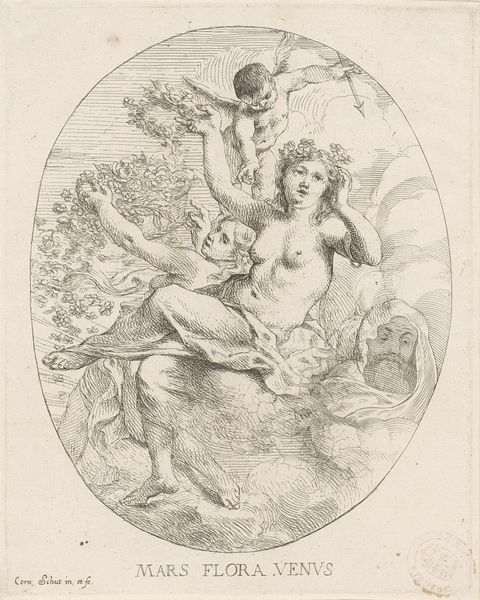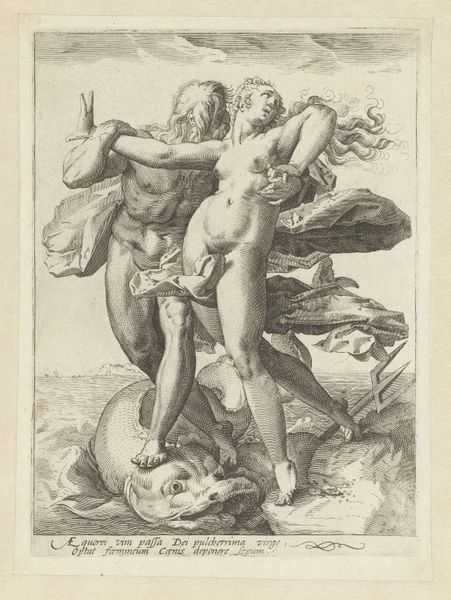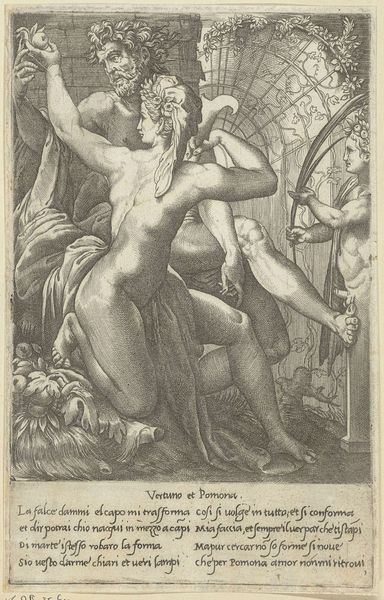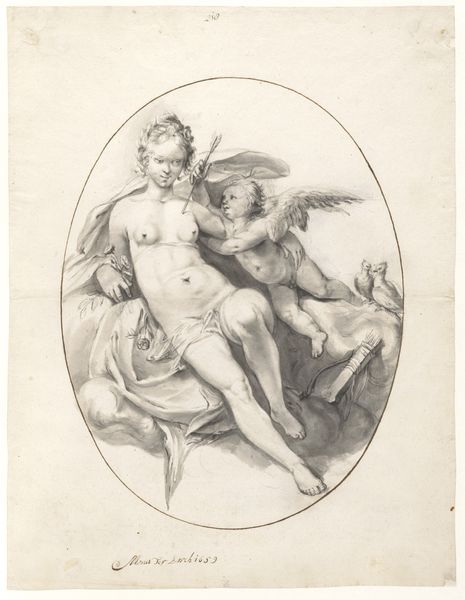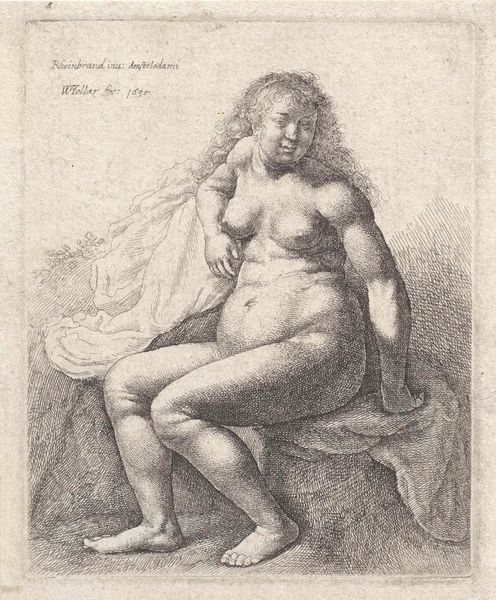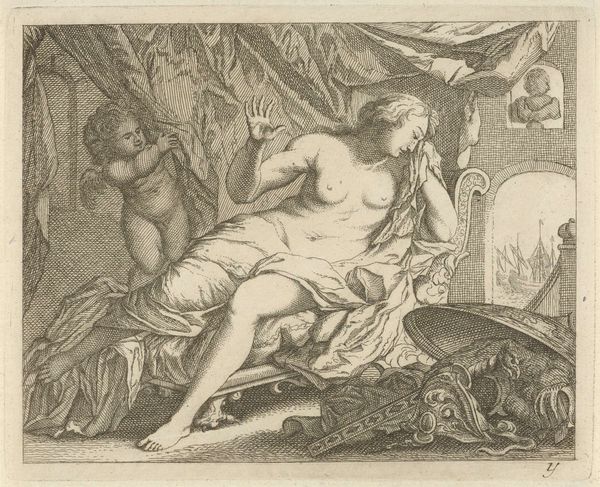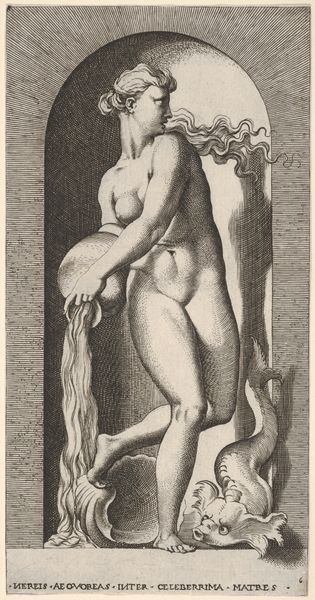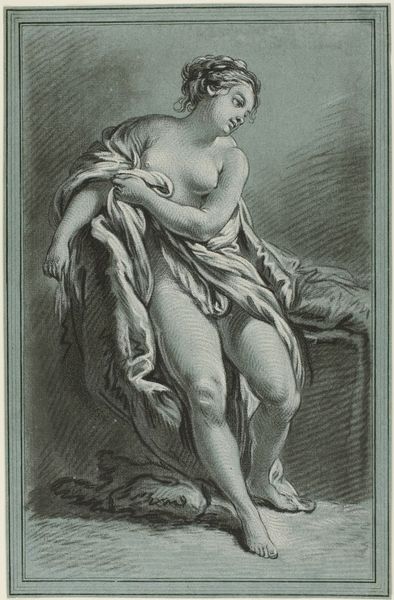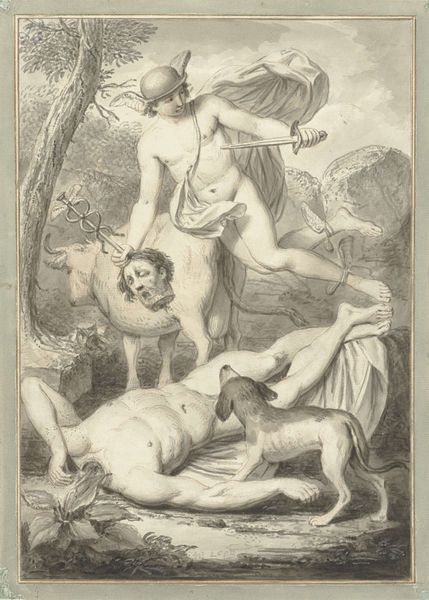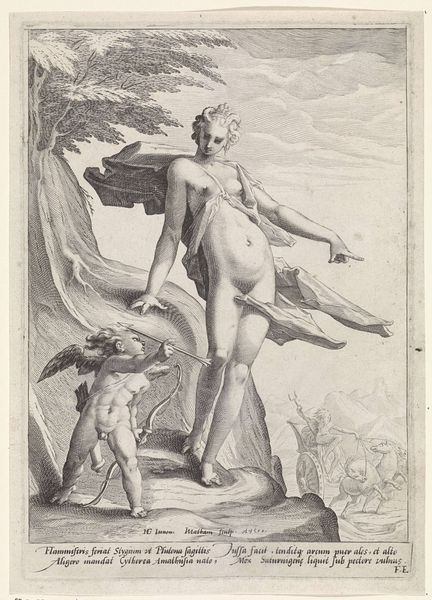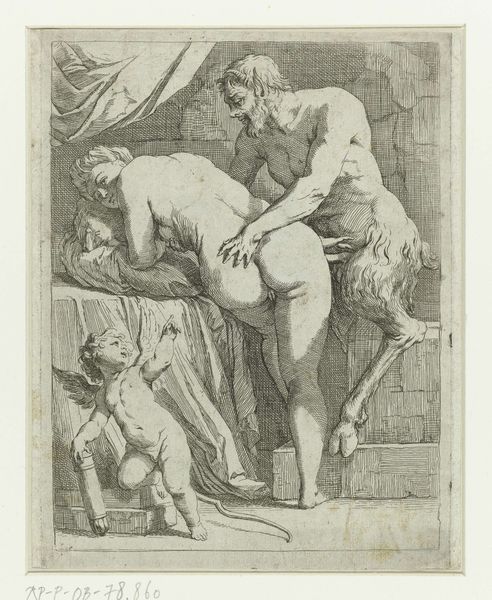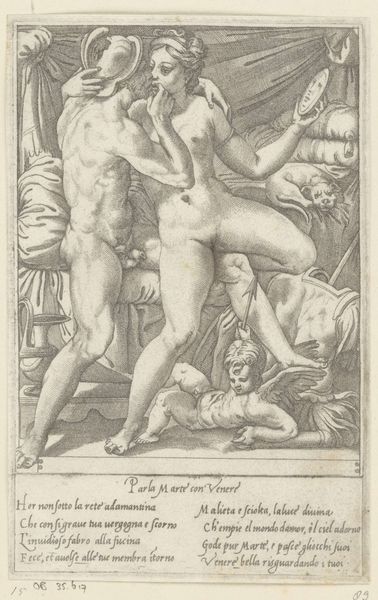
drawing, paper, ink
#
portrait
#
pencil drawn
#
drawing
#
allegory
#
pencil sketch
#
charcoal drawing
#
figuration
#
paper
#
form
#
ink
#
pencil drawing
#
classicism
#
chiaroscuro
#
line
#
pencil work
#
history-painting
#
academic-art
#
nude
Dimensions: height 145 mm, width 92 mm
Copyright: Rijks Museum: Open Domain
Curator: Here we see a drawing attributed to Hendrik van Limborch, created sometime between 1691 and 1759, titled “Zittende allegorische vrouwenfiguur.” It’s executed in ink on paper. Editor: It has such a ghostly feel! A stark light and shadow contrasts defining a woman figure against swirling clouds. The light radiating from her hand feels unsettling and a bit sad. Curator: Absolutely. Limborch’s utilization of chiaroscuro emphasizes the drama inherent in the allegory. The sun held aloft is an immediate and potent symbol. Consider the historical associations between the sun and enlightenment, knowledge, or truth itself. She gestures toward that ideal, offering it almost, as the script beneath says ‘naked truth.’ Editor: But “truth” is often presented here as distinctly feminine, almost always white and classical—and this comes loaded with problems considering truth can be a matter of perspective, of experience and power! Curator: It's certainly part of the historical context to consider these issues with a classical piece like this. However, here in the composition, there’s a clear symbolic language: the nude figure as representing purity or unadorned honesty. The book beneath her—knowledge—and the putto suggests divine inspiration. These are long-standing allegorical symbols and figures that would carry particular significance to a seventeenth-century audience, or for others seeking moral insight. Editor: I agree there's layers within these historical understandings and how we read allegories of gender and power today, of course. Thinking about those implications—considering who is allowed to speak 'truth' within patriarchal structures feels essential for anyone engaging with this today, I think. Curator: I agree—especially considering its display within a broader culture steeped in specific philosophical traditions. We can certainly see a legacy of imagery influencing contemporary rhetoric and visual tropes about gender and influence to this day. Editor: Right, the image itself serves as a fascinating locus point through time to discuss both aesthetic value and embedded ideologies of truth. Curator: It really encapsulates this pivotal moment where art and ideals intersect in complex, resonant ways, prompting ongoing critical dialogue.
Comments
No comments
Be the first to comment and join the conversation on the ultimate creative platform.
